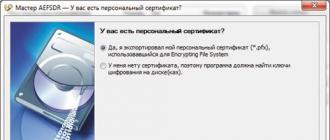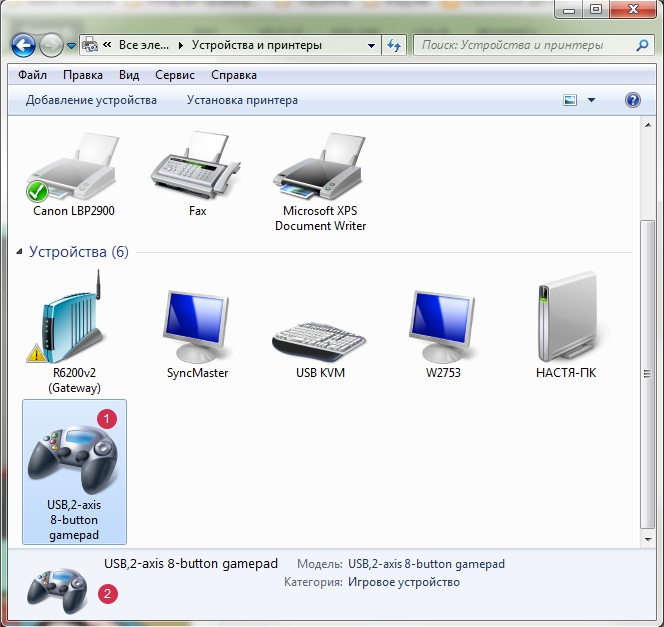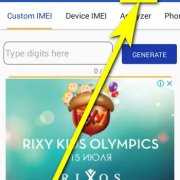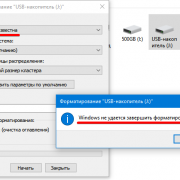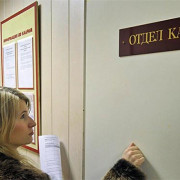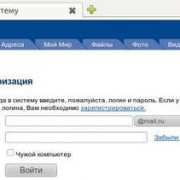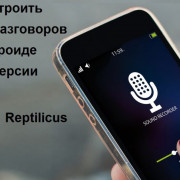Autohotkey — программа для автоматизации действий на пк
Содержание:
- Parameters
- 5 лучших онлайн-сервисов для для бесплатной конвертации формата DJVU в PDF
- Попробуйте это мгновенный убийца монитора
- Создать скрипт AutoHotkey с нуля
- Основные возможности
- Tray Icon
- Other Features
- Физические лица-плательщики имущественных налогов
- Законодательное регулирование
- Repeating or Holding Down a Key
- Hotkey Tips and Remarks
- Что с этим делать
- Send variants
- Автоматизируйте ваши повторяющиеся задачи с помощью AutoHotkey
- 5 — Commands vs. Functions()
- Introduction and Simple Examples
- Return, Exit, and General Remarks
- Как использовать AutoHotkey
Parameters
- Keys
-
The sequence of keys to send. As with other commands, the comma in front of the first parameter is optional.
By default (that is, if neither SendRaw nor the or is used), the characters have a special meaning. The characters represent the modifier keys Ctrl, Shift, Alt and Win. They affect only the very next key. To send the corresponding modifier key on its own, enclose the key name in braces. To just press (hold down) or release the key, follow the key name with the word «down» or «up» as shown below.
Symbol Key Press Release Examples ^ {Ctrl} {Ctrl down} {Ctrl up} presses Control+Home + {Shift} {Shift down} {Shift up} sends the text «AbC» presses Alt+Shift+A ! {Alt} {Alt down} {Alt up} presses Alt+A # {LWin}{RWin} {LWin down}{RWin down} {LWin up}{RWin up} holds down the Win key and then presses the E key Note: As capital letters are produced by sending the Shift key, produces a different effect in some programs than . For example, presses Alt+Shift+A and presses Alt+A. If in doubt, use lowercase.
The characters are used to enclose , and to send special characters literally. For example, is the Tab key and is a literal exclamation mark.
: Enclosing a plain ASCII letter (a-z or A-Z) in braces forces it to be sent as the corresponding virtual keycode, even if the character does not exist on the current keyboard layout. In other words, produces the letter «a» while may or may not produce «a», depending on the keyboard layout. For details, see the .
5 лучших онлайн-сервисов для для бесплатной конвертации формата DJVU в PDF
Вы можете конвертировать одну страницу DjVu, а также многостраничный DjVu в PDF, используя любой из этих веб-сайтов. Кроме того, некоторые сервисы в этом списке поддерживают процесс пакетного преобразования, в то время как другие могут конвертировать один файл DJVU за раз.
Некоторые их приведенных ниже конвертеров формата DJVU в PDF также имеют и другие интересные функции. Например, один веб-сайт позволяет просматривать процесс конверсии в режиме реального времени, а другой сервис поддерживает максимальный размер одного файла DjVu в 200 МБ и т. д.
Начнем с первого онлайн-конвертера DJVU в PDF, представленного в этом списке.
1. DjVu to PDF
Если вам нужна массовая конвертация DjVu в файлы PDF, вы должны попробовать этот сайт. Для преобразования можно загружать 20 файлов DjVu за один раз. Как только вы добавляете файлы, они загружаются один за другим, а также автоматически преобразуются. Сам процесс преобразования отображается в режиме реального времени.
Интерфейс DjVu to PDF
Для каждого файла вы увидите кнопку «DOWNLOAD». Эту кнопку можно также использовать для сохранения конкретного PDF файла.
Загруженные файлы DjVu автоматически удаляются через один час. Таким образом, веб-сайт также заботится о конфиденциальности ваших файлов. Отличный вариант для конвертации файлов.
2. Zamzar
Zamzar — очень популярный файловый конвертер, который поддерживает огромное разнообразие форматов файлов для преобразования. Среди этих форматов также поддерживается конвертация DJVU в PDF. Zamzar поддерживает пакетное преобразование DJVU в PDF.
Интерфейс Zamzar
После того, как вы загрузили файлы DjVu, вы можете выбрать их вывод в формате PDF, а затем указать адрес электронной почты, в котором вы получите ссылки для загрузки преобразованных файлов. После того, как вы получите ссылки для скачивания, ваши файлы хранятся на серверах в течение 24 часов, а затем автоматически удаляются. Это действительно очень полезный сайт для конвертирования файла DjVu в PDF формат.
3. Online Converter (DJVU в PDF)
Интерфейс Online Converter
Он также оснащен уникальной функцией, с помощью которой можно установить пользовательскую высоту и ширину для преобразованного файла. Эта функция появляется, когда вы выбираете «Options». Хотя эта функция уникальна и очень полезна, она может не сработать.
Скорость преобразования очень хороша. Кроме того, ваш оригинальный файл DjVu (так же, как и на 2 предыдущих сервисах) удаляется с серверов после преобразования.
4. Go4Convert
Если вы ищете конвертер DJVU в PDF, который не имеет ограничений по размеру файла, то этот онлайн-сервис по конвертации файлов будет отличным выбором. Это замечательный сайт для конвертирования больших файлов DJVU в PDF формат. Go4Convert позволяет преобразовывать несколько файлов за один раз. Вы можете выбрать онлайн-файл DJVU или загрузить DJVU-файл с ПК.
Интерфейс Go4Convert
Как только DJVU-файл загружается, Go4Convert обрабатывает его, а окно сохранения автоматически открывается. Используя это окно, вы можете выбрать место назначения и сохранить выходной PDF на своем ПК. Процесс конвертации очень хорош. Так что это очень хороший сайт для конвертирования DjVu в PDF.
5. Convert DJVU to PDF Online Free
Convert DJVU to PDF Online Free — очень простой и удобный веб-сайт. На сайте можно преобразовывать только один файл DjVu, но для DjVu-файла нет ограничений по размеру.
Интерфейс Convert DJVU to PDF Online Free
Как только вы выберете файл DjVu с ПК и нажмете кнопку «Конвертировать», сервис начнет процесс преобразования, после чего откроется окно «Сохранить как». Используя это окно, вы можете сохранить выходной файл PDF в выбранную папку назначения на вашем ПК.
Сайт не хранит ваши файлы, поэтому они остаются только у вас.
Таким образом, существует несколько простых способов для того чтобы перевести файл DJVU в PDF формат. Независимо от того, какой способ вы выберете, использование специальной программы или онлайн-сервис, преобразование файлов не составит труда.
Попробуйте это мгновенный убийца монитора
AutoHotkey также может отправлять системные команды. Если вы целый день работаете за компьютером, возможно, вы не будете активно его использовать, но не хотите его выключать. Этот скрипт мгновенно обрежет сигнал на экране, а не будет ждать, пока он истечет, или заставка сработает.
Скачать: monitor_sleep.ahk
После загрузки откройте скрипт и нажмите F1, Разбудите его снова, перемещая мышь или нажимая любую клавишу на клавиатуре. AutoHotkey может управлять многими элементами вашей системы аналогично этому, включая отправку команд выключения, открытия пользовательских проводников Windows и даже команд в командной строке.
Создать скрипт AutoHotkey с нуля
До сих пор вы использовали сценарии других людей. Теперь давайте создадим простой эскиз с нуля, который возьмет все, что есть в нашем буфере обмена, и выполнит поиск в нем с помощью Duck Duck Go. Щелкните правой кнопкой мыши на рабочем столе Windows и выберите New> AutoHotkey Script, Кроме того, вы можете использовать любой текстовый редактор или IDE на ваш выбор
Текстовые редакторы против IDE: какой из них лучше для программистов?
Текстовые редакторы против IDE: какой из них лучше для программистов?Выбор между расширенной IDE и более простым текстовым редактором может быть трудным. Мы предлагаем некоторую информацию, чтобы помочь вам принять это решение.
Прочитайте больше
и введите следующее:
#s ссылается на ярлык для запуска сценария. Символ хеша относится к Ключ Windows, означающий, что Win + S наш выбранный ярлык. Этот ярлык зарезервирован для функции поиска Windows 10. В этом случае мы переопределяем его, то есть поиск DuckDuckGo произойдет на его месте. Если вы используете ярлык поиска Windows, замените его другой буквой.
Бежать Команда является одним из мульти-инструментов AutoHotkeys. Согласно документации откроется «Документ, URL, исполняемый файл (.exe, .com, .bat и т. Д.), Ярлык (.lnk) или системный глагол…». В этом случае AutoHotkey откроет URL в браузер по умолчанию.
Наконец, ? Д =% буфер% part – это команда для добавления URL с содержимым буфера обмена Windows.
Основные возможности
- автоматизация различных действий путем эмуляции нажатия определенных клавиш на мыши и клавиатуре;
- написание или запись макросов с использованием рекордера;
- назначение горячих клавиш;
- быстрая расшифровка аббревиатур;
- создание произвольных форм для ввода информации;
- изменение назначения любых клавиш;
- обработка сигналов, переданных внешними устройствами управления;
- преобразование скриптов;
- управление громкостью и другими настройками звуковых карт;
- выполнение мониторинга системы;
- изменение содержимого в буфере обмена;
- отображение на экране надписей и диалоговых окон;
- автоматизация действий в играх;
- любые операции с текстовыми файлами и др.
Плюсы и минусы
Плюсы:
- автоматический запуск практически любых операций на ПК;
- встроенный скриптовый язык;
- переназначение любых клавиш;
- поддержка разных устройств для вывода.
Минусы:
некоторые сложности в освоении.
Похожие программы
Auto-Clicker. Программа для запоминания и последующего воспроизведения всех действий компьютерной мыши. Записанные действия в ней можно повторять произвольное количество раз, настраивая скорость их воспроизведения.
Macro Recorder. Приложение, которое может автоматизировать все рутинные процессы на компьютере. С его помощью можно создавать макросы, которые будут самостоятельно запускать необходимые программы, выполнять клики мышкой, вводить текст и т. д.
Как пользоваться приложением
Для того чтобы с помощью программы назначить автоматическое выполнение какого-либо действия, нужно создать скрипт. Он представляет собой всплывающее окно с пометкой «Я рогалег». С этой целью используем команду MsgBox, которую можно вызвать любым текстом. Надпись и команду необходимо вписать в любой текстовый редактор, так как сама программа как такового отдельного окна не имеет. Далее сохраняем файл, обязательно указав для него расширение «ahk». Скрипт будет выполнен при нажатии на него двойным щелчком.
Выполнение скрипта
При запуске скрипта появится значок «Autohotkey». Нажав на него правой кнопкой, вы сможете выбрать необходимые команды.
Выбор команд
Код, который должен автоматически выполняться при запуске скрипта, помещается вверху файла. Идентификаторы нужно указывать для горячих клавиш.
Рассмотрим, как это действует, на примере назначения автоматического запуска блокнота Notepad++ при нажатии определенных клавиш.
Для начала набираем «#n:: Run notepad++» и сохраняем файл. Дважды щелкаем по нему и набираем команду «Win+n». В области уведомления появится значок, а программа будет запущена при нажатии указанной комбинации клавиш.
В команде значок «#n» определяет кнопки, «::» — разделяет обозначения самих клавиш от команд. Остальные базовые кнопки обозначаются таким образом:
Обозначения кнопок
AutoHotkey поможет легко и быстро выполнять любые операции и действия, которые вам приходится часто производить на своем ПК.
Tray Icon
By default, each script adds its own icon to the taskbar notification area (commonly known as the tray).
The tray icon usually looks like this (but the color or letter changes when the script is paused or suspended):
Right-click the tray icon to show the tray menu, which has the following options by default:
- Open — Open the script’s .
- Help — Open the AutoHotkey offline help file.
- Window Spy — Displays various information about a window.
- Reload This Script — See Reload.
- Edit This Script — See Edit.
- Suspend Hotkeys — Suspend or unsuspend hotkeys.
- Pause Script — Pause or unpause the script.
- Exit — Exit the script.
By default, double-clicking the tray icon shows the script’s .
The Menu command can be used to customise the tray icon and menu.
The #NoTrayIcon directive can be used to hide the tray icon.
Other Features
NumLock, CapsLock, and ScrollLock: These keys may be forced to be «AlwaysOn» or «AlwaysOff». For example: .
Overriding Explorer’s hotkeys: Windows’ built-in hotkeys such as Win+E (#e) and Win+R (#r) can be individually overridden simply by assigning them to an action in the script. See the override page for details.
Substitutes for Alt-Tab: Hotkeys can provide an alternate means of alt-tabbing. For example, the following two hotkeys allow you to alt-tab with your right hand:
RControl & RShift::AltTab ; Hold down right-control then press right-shift repeatedly to move forward. RControl & Enter::ShiftAltTab ; Without even having to release right-control, press Enter to reverse direction.
For more details, see .
Физические лица-плательщики имущественных налогов
Если рассматривать налоги физических лиц, то плательщиками земельного налога являются собственники земельных участков, а также граждане, владеющие земельными участками на праве пожизненного наследуемого владения и постоянного бессрочного пользования.
Налоговой базой по земельному налогу является кадастровая стоимость земельных участков.
Плательщиками транспортного налога физические лица становятся с момента постановки транспортного средства на учет в органах ГИБДД или в иных регистрирующих транспортные средства органах.
По наземным транспортным средствам в большинстве случаев налоговой базой является мощность транспортного средства в лошадиных силах.
Плательщики налога на имущество физических лиц — это граждане, зарегистрировавшие права собственности на дома, квартиры, комнаты и иные строения и сооружения.
Налоговая база в настоящий момент — это инвентаризационная стоимость объектов недвижимости.
Законодательное регулирование
Repeating or Holding Down a Key
To repeat a keystroke: Enclose in braces the name of the key followed by the number of times to repeat it. For example:
Send {DEL 4} ; Presses the Delete key 4 times.
Send {S 30} ; Sends 30 uppercase S characters.
Send +{TAB 4} ; Presses Shift-Tab 4 times.
To hold down or release a key: Enclose in braces the name of the key followed by the word Down or Up. For example:
Send {b down}{b up}
Send {TAB down}{TAB up}
Send {Up down} ; Press down the up-arrow key.
Sleep 1000 ; Keep it down for one second.
Send {Up up} ; Release the up-arrow key.
When a key is held down via the method above, it does not begin auto-repeating like it would if you were physically holding it down (this is because auto-repeat is a driver/hardware feature). However, a Loop can be used to simulate auto-repeat. The following example sends 20 tab keystrokes:
Loop 20
{
Send {Tab down} ; Auto-repeat consists of consecutive down-events (with no up-events).
Sleep 30 ; The number of milliseconds between keystrokes (or use SetKeyDelay).
}
Send {Tab up} ; Release the key.
By default, Send will not automatically release a modifier key (Control/Shift/Alt/Win) if that modifier key was «pressed down» by sending it. For example, may behave similar to if the user is physically holding Ctrl, but followed by will produce a Control+A keystroke. DownTemp and DownR can be used to override this behavior. DownTemp and DownR have the same effect as Down except for the modifier keys (Control/Shift/Alt/Win).
DownTemp tells subsequent sends that the key is not permanently down, and may be released whenever a keystroke calls for it. For example, followed later by would produce a normal A keystroke, not a Control+A keystroke. Any use of Send may potentially release the modifier permanently, so DownTemp is not ideal for remapping modifier keys.
: DownR (where «R» stands for remapping, which is its main use) tells subsequent sends that if the key is automatically released, it should be pressed down again when send is finished. For example, followed later by would produce a normal A keystroke, not a Control+A keystroke, but will leave the Control key in the pressed state for use with keyboard shortcuts. In other words, DownR has an effect similar to physically pressing the key.
If a character does not correspond to a virtual key on the current keyboard layout, it cannot be «pressed» or «released». For example, has no effect on most layouts, and is equivalent to .
Hotkey Tips and Remarks
Each numpad key can be made to launch two different hotkey subroutines depending on the state of NumLock. Alternatively, a numpad key can be made to launch the same subroutine regardless of the NumLock state. For example:
NumpadEnd:: Numpad1:: MsgBox, This hotkey is launched regardless of whether NumLock is on. return
If the is used with a even once, it changes the behavior of that prefix key for all combinations. For example, in both of the below hotkeys, the active window will receive all right-clicks even though only one of the definitions contains a tilde:
~RButton & LButton::MsgBox You pressed the left mouse button while holding down the right. RButton & WheelUp::MsgBox You turned the mouse wheel up while holding down the right button.
The Suspend command can temporarily disable all hotkeys except for ones you make exempt. For greater selectivity, use #IfWinActive/Exist.
By means of the Hotkey command, hotkeys can be created dynamically while the script is running. The Hotkey command can also modify, disable, or enable the script’s existing hotkeys individually.
Joystick hotkeys do not currently support modifier prefixes such as ^ (Control) and # (Win). However, you can use GetKeyState to mimic this effect as shown in the following example:
Joy2::
if not GetKeyState("Control") ; Neither the left nor right Control key is down.
return ; i.e. Do nothing.
MsgBox You pressed the first joystick's second button while holding down the Control key.
return
There may be times when a hotkey should wait for its own modifier keys to be released before continuing. Consider the following example:
^!s::Send {Delete}
Pressing Control+Alt+S would cause the system to behave as though you pressed Control+Alt+Delete (due to the system’s aggressive detection of Ctrl+Alt+Delete). To work around this, use KeyWait to wait for the keys to be released; for example:
^!s::
KeyWait Control
KeyWait Alt
Send {Delete}
return
If a hotkey label like produces an error like «Invalid Hotkey», your system’s keyboard layout/language might not have the specified character («Z» in this case). Try using a different character that you know exists in your keyboard layout.
A hotkey label can be used as the target of a Gosub or Goto. For example: .
One common use for hotkeys is to start and stop a repeating action, such as a series of keystrokes or mouse clicks. For an example of this, see .
Finally, each script is quasi multi-threaded, which allows a new hotkey to be launched even when a previous hotkey subroutine is still running. For example, new hotkeys can be launched even while a MsgBox is being displayed by the current hotkey.
Что с этим делать
- Поставьте четкие, понятные цели и задачи — зачем вам сейчас понимание ЦА.
- Соберите всю информацию о своей аудитории через статистику сайта, своих сообществ, опросы и анкеты.
- Проведите фокус-группы и интервью, если это возможно.
- Соберите всю информацию о своей ЦА и разбейте её на сегменты с помощью метода 5W или с привязкой к одному из важных для вашего продукта критериев.
- Дождитесь 2-ю часть нашей инструкции =)
В следующей части инструкции мы расскажем:
- как составить портреты клиентов;
- какие психотипы клиентов стоит использовать;
- что такое «лестница узнавания» по Бену Ханту;
- как могут выглядеть портреты клиентов (примеры).
23316
Send variants
Send: By default, Send is synonymous with SendEvent; but it can be made a synonym for SendInput or SendPlay via SendMode.
SendRaw: Similar to Send, except that all characters in Keys are interpreted and sent literally. See for details.
SendInput and SendPlay : SendInput and SendPlay use the same syntax as Send but are generally faster and more reliable. In addition, they buffer any physical keyboard or mouse activity during the send, which prevents the user’s keystrokes from being interspersed with those being sent. SendMode can be used to make Send synonymous with SendInput or SendPlay. For more details about each mode, see and below.
SendEvent : SendEvent sends keystrokes using the same method as the pre-1.0.43 Send command. The rate at which keystrokes are sent is determined by SetKeyDelay.
Автоматизируйте ваши повторяющиеся задачи с помощью AutoHotkey
AutoHotkey способен на многое, и сказать, что этот урок едва царапает поверхность, было бы преуменьшением. В прошлом мы рассмотрели много важных скриптов AutoHotkey, и есть много других, которые могут сделать вашу жизнь проще.
Умение создавать собственные сценарии AutoHotkey также является отличным навыком, хотя стоит проверить руководство по сочетанию клавиш Windows Ultimate.
Сочетания клавиш Windows 101: полное руководство
Сочетания клавиш Windows 101: полное руководствоСочетания клавиш могут сэкономить часы времени. Освойте универсальные сочетания клавиш Windows, приемы клавиатуры для конкретных программ и несколько других советов, чтобы ускорить вашу работу.
Прочитайте больше
чтобы увидеть, если ярлык, который вы хотите сделать, уже существует!
Узнайте больше о: AutoHotkey, компьютерная автоматизация, сочетания клавиш.
5 — Commands vs. Functions()
AutoHotkey has two main types of things used by the scripter to create code: Commands and functions.
A list of all commands and built-in functions can be found here.
Commands
You can tell what a command is by looking at its syntax (the way it looks). Commands do not use parentheses around the parameters like functions do. So a command would look like this:
Command, Parameter1, Parameter2, Parameter3
When using commands, you cannot squish other commands onto the same line as a previous command (exception: IfEqual). You cannot put commands inside the parameters of other commands. For example:
MsgBox, Hello Run, notepad.exe ; Wrong MsgBox, Hello, Run, notepad.exe ; Wrong MsgBox, Hello ; Correct Run, notepad.exe
need
You can do math in parameters if you force an expression with a single , but that will not be covered.
Functions
As stated above, functions are different because they use parentheses. A typical function looks like:
Function(Parameter1, Parameter2, Parameter3)
Functions have a few main differences:
- You can do math in them:
SubStr(37 * 12, 1, 2) SubStr(A_Hour - 12, 2)
- Variables do not need to be wrapped in percent signs:
SubStr(A_Now, 7, 2)
- Functions can go inside of functions:
SubStr(A_AhkPath, InStr(A_AhkPath, "AutoHotkey"))
- Text needs to be wrapped in quotes:
SubStr("I'm scripting, awesome!", 16)
A function usually return a value differently than a command does. Commands need an OutputVar parameter, functions do not. The most common way assigning the value of a function to a variable is like so:
MyVar := SubStr("I'm scripting, awesome!", 16)
This isn’t the only way, but the most common. You are using to store the return value of the function that is to the right of the operator. See Functions for more details.
In short:
; These are commands:
MsgBox, This is some text.
StringReplace, Output, Input, AutoHotkey, AutoHotKey, All
SendInput, This is awesome{!}{!}{!}
; These are functions:
SubStr("I'm scripting, awesome!", 16)
FileExist(VariableContainingPath)
Output := SubStr("I'm scripting, awesome!", 16)
a. Code blocks
Code blocks are lines of code surrounded by little curly brackets ( and ). They group a section of code together so that AutoHotkey knows it’s one big family and that it needs to stay together. They are most often used with functions and control flow statements such as If and Loop. Without them, only the first line in the block is called.
In the following code, both lines are run only if MyVar equals 5:
if (MyVar = 5)
{
MsgBox, MyVar equals %MyVar%!!
ExitApp
}
In the following code, the message box is only shown if MyVar equals 5. The script will always exit, even if MyVar is not 5:
if (MyVar = 5)
MsgBox, MyVar equals %MyVar%!!
ExitApp
This is perfectly fine since the if-statement only had one line of code associated with it. It’s exactly the same as above, but I outdented the second line so we know it’s separated from the if-statement:
if (MyVar = 5)
MsgBox, MyVar equals %MyVar%!!
MsgBox, We are now 'outside' of the if-statement. We did not need curly brackets since there was only one line below it.
Introduction and Simple Examples
A function is similar to a subroutine (Gosub) except that it can accept parameters (inputs) from its caller. In addition, a function may optionally return a value to its caller. Consider the following simple function that accepts two numbers and returns their sum:
Add(x, y)
{
return x + y ; "Return" expects an .
}
The above is known as a function definition because it creates a function named «Add» (not case sensitive) and establishes that anyone who calls it must provide exactly two parameters (x and y). To call the function, assign its result to a variable with the := operator. For example:
Var := Add(2, 3) ; The number 5 will be stored in Var.
Also, a function may be called without storing its return value:
Add(2, 3)
But in this case, any value returned by the function is discarded; so unless the function produces some effect other than its return value, the call would serve no purpose.
Since a function call is an , any variable names in its parameter list should not be enclosed in percent signs. By contrast, literal strings should be enclosed in double quotes. For example:
if (MyVar, "fox")
MsgBox The variable MyVar contains the word fox.
Finally, functions may be called in the parameters of any command (except OutputVar and InputVar parameters such as those of StringLen). However, parameters that do not support must use the «% » prefix as in this example:
MsgBox % "The answer is: " . Add(3, 2)
The «% » prefix is also permitted in parameters that natively support expressions, but it is simply ignored.
Return, Exit, and General Remarks
If the flow of execution within a function reaches the function’s closing brace prior to encountering a Return, the function ends and returns a blank value (empty string) to its caller. A blank value is also returned whenever the function explicitly omits Return’s parameter.
When a function uses the Exit command to terminate the current thread, its caller does not receive a return value at all. For example, the statement would leave unchanged if exits. The same thing happens if a function causes a runtime error such as running a nonexistent file (when is not in effect).
A function may alter the value of ErrorLevel for the purpose of returning an extra value that is easy to remember.
To call a function with one or more blank values (empty strings), use an empty pair of quotes as in this example: .
Since calling a function does not start a new thread, any changes made by a function to settings such as SendMode and SetTitleMatchMode will go into effect for its caller too.
The caller of a function may pass a nonexistent variable or array element to it, which is useful when the function expects the corresponding parameter to be . For example, calling would create the variable automatically as a or global (depending on whether the caller is inside a function and whether it has the in effect).
When used inside a function, ListVars displays a function’s along with their contents. This can help debug a script.
Как использовать AutoHotkey
После установки найдите AutoHotkey в Начните меню и откройте его. Вы увидите справочный документ, который AutoHotkey имеет вместо традиционного графического интерфейса. Самый простой способ использовать AutoHotkey – это использовать сценарии, уже созданные другими. Этот скрипт преобразует «кстати» в «кстати» каждый раз, когда вы его набираете.
Скачать: кстати.
Это изображение показывает, что содержит скрипт. Дважды щелкните скрипт, чтобы запустить его, затем попробуйте, открыв любой текстовый редактор или окно браузера и набрав кстати,
Довольно круто, но, возможно, не так практично. Как насчет того, что вы можете использовать каждый день?
